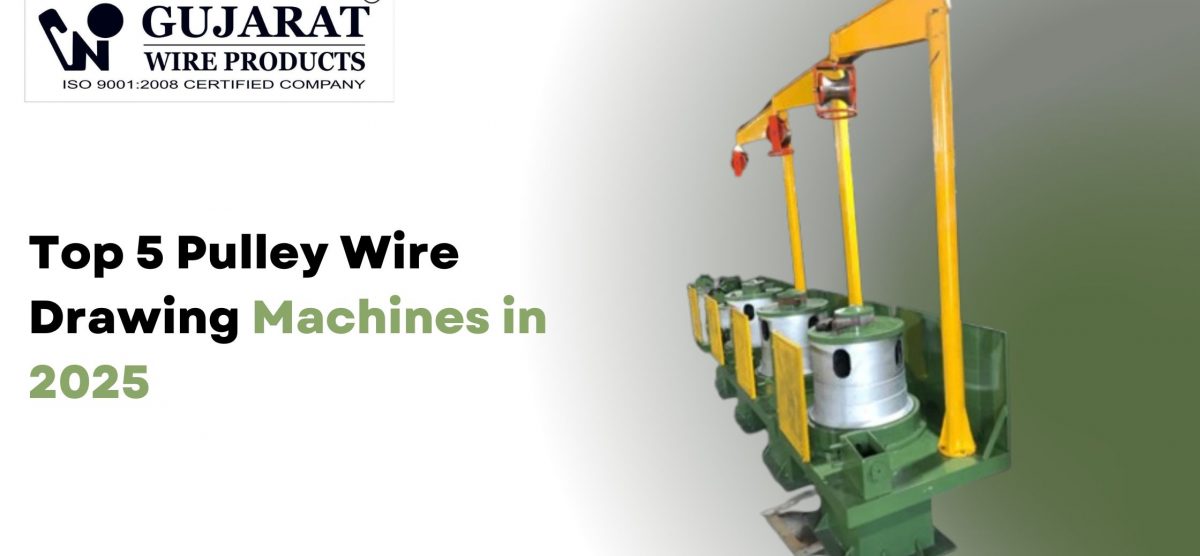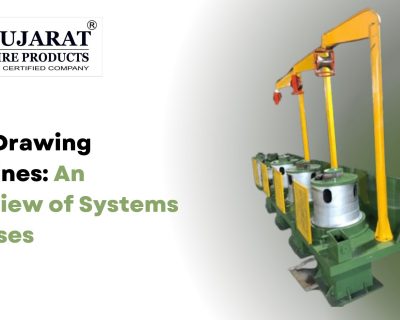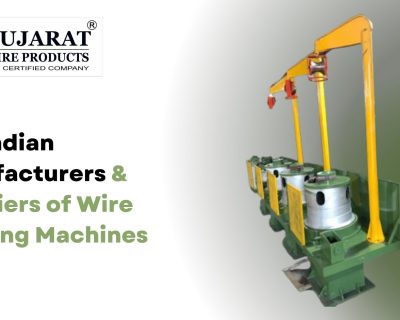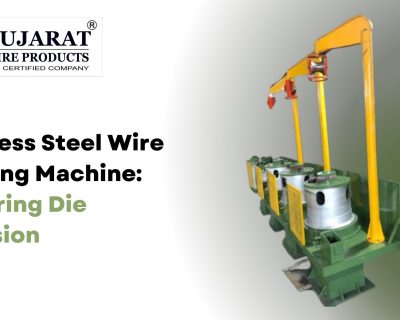Blog

Top 5 Pulley Wire Drawing Machines in 2025
Introduction
Most wire manufacturers focus on speed. They chase higher meters per minute without asking whether their machine can sustain that output across three shifts daily. Pulley wire drawing machines dominate India’s wire production landscape because they balance speed, cooling efficiency, and maintenance simplicity in ways straight-line machines can’t match. But here’s what buyers overlook: the wrong pulley machine costs more in downtime and die replacement than you’ll ever save on the purchase price. The pulley design routes wire through multiple drawing stages, each one reducing diameter while maintaining tensile strength. This guide examines five machine configurations based on block diameter, power requirements, and production capacity. The focus stays on practical selection criteria—inlet/outlet wire specifications, compression ratios, energy consumption, and cooling effectiveness. Whether setting up a new wire operation or replacing aging equipment, these technical distinctions determine profitability for the next decade.
Understanding Pulley Wire Drawing Machines
Working Mechanism
Pulley machines route wire through individual drawing blocks arranged vertically in sealed oil-bath enclosures. Each block operates as an independent drawing stage, reducing wire diameter by 20-30% per pass. The pulley system between blocks maintains precise tension control and prevents wire twisting during the drawing process.
Cooling happens at two points: spray nozzles inside the drum reduce residual heat, and dies sit submerged in cooling water. This dual cooling keeps working temperatures stable even during continuous production.
Key Advantages Over Other Types
Pulley machines produce wire with superior plasticity and toughness because the drawing process avoids twisting and bending. The cooling effectiveness keeps wire hardening rates low, maintaining consistent mechanical properties. Production costs run hundreds of dollars per ton lower than manual or less efficient systems.
Top 5 Machine Configurations
1. 600mm Block Diameter Machine
Specifications:
- Inlet wire: 8-6mm diameter
- Outlet wire: 3-2mm diameter
- Material strength capacity: up to 1150 MPa
- Total compression: 85%
- Max block speed: 200 m/min
- Power requirement: 37-30 kW
- Weight: 4,500 kg
Best for: Heavy-gauge wire production serving construction, fencing, and industrial cable applications. The larger block diameter handles higher tension loads without premature wear.
2. 560mm Block Diameter Machine
Specifications:
- Inlet wire: 6.5mm diameter
- Outlet wire: 1.8mm diameter
- Material strength: up to 1150 MPa
- Total compression: 92.33%
- Max block speed: 245 m/min
- Power: 30-18.5 kW
- Weight: 2,000 kg
Best for: Mid-range wire production with excellent compression ratios. The power efficiency makes this configuration ideal for operations running multiple shifts where electricity costs matter.
3. 550mm Block Diameter Machine
Specifications:
- Inlet wire: 6.5mm
- Outlet wire: 1.8mm
- Material strength: up to 900 MPa
- Total compression: 92.33%
- Max block speed: 245 m/min
- Power: 22-15 kW
- Weight: 2,000 kg
Best for:Standard wire drawing operations focused on mild steel wire for nails, mesh, and general fastener production. Lower material strength capacity reduces equipment costs without sacrificing output for common applications.
4. 450mm Block Diameter Machine
Specifications:
- Inlet wire: 3.6mm
- Outlet wire: 1.1mm
- Material strength: up to 1300 MPa
- Total compression: 90.7%
- Max block speed: 346.9 m/min
- Power: 18.5-7.5 kW
- Weight: 1,500 kg
Best for: Fine wire applications requiring high-strength output. The faster block speed compensates for smaller wire volumes, maintaining productivity despite reduced cross-sectional area.
5. 350mm Block Diameter Machine
Specifications:
- Inlet wire: 2.5mm
- Outlet wire: 0.8mm
- Material strength: up to 1400 MPa
- Total compression: 87%
- Max block speed: 200 m/min
- Power: 11-5.5 kW
- Weight: 1,500 kg
Best for: Precision wire production for electronics, medical devices, and specialized fasteners. The highest material strength capacity handles spring steel and other demanding applications.
Selection Criteria
Matching Capacity to Production Goals
Calculate your daily wire consumption in the target diameter range. If producing 1,200 kg of 2mm wire daily across two shifts, work backward to determine required inlet wire and compression stages. Undersized machines create bottlenecks; oversized machines waste capital and floor space.
Energy Efficiency Matters More Than Speed
Modern pulley machines save up to 25% on electricity costs compared to older designs. A 30 kW machine running 16 hours daily consumes 480 kWh. At ₹8 per unit, that’s ₹3,840 daily or ₹1.15 lakh monthly. Energy-efficient models recover their premium within 18 months through reduced operating costs.
Cooling System Design
Insufficient cooling degrades wire surface quality and accelerates die wear. Look for machines with both internal drum cooling and die-immersion systems. Surface defects that appear after drawing often trace back to heat management failures, not die quality.
FAQs
Q: What wire diameter reduction should I expect per drawing stage?
A: Each pulley block typically reduces diameter by 20-30% on average. Total compression across all stages ranges from 77% to 92% depending on machine configuration and wire material properties.
Q: Can pulley machines handle stainless steel and high-carbon wire?
A: Yes, machines rated for 1300-1400 MPa material strength process stainless steel, spring steel, and high-carbon grades. Match your material specifications to machine capacity to avoid premature equipment failure.
Q: How does machine weight affect performance?
A: Heavier machines (3,000+ kg) dampen vibration better during high-speed operation, maintaining alignment and reducing die wear. Lighter machines suit smaller workshops but require more frequent maintenance checks on mounting stability.
Q: What determines maximum block speed?
A: Block diameter and wire diameter work together. Smaller blocks spin faster because circumference is smaller, but larger blocks handle heavier wire gauges. Operating significantly above rated speed reduces wire quality and increases defect rates.
Q: Do I need special electrical infrastructure?
A: Most pulley machines run on standard three-phase 380-440V industrial power. Calculate total load including cooling pumps and controls. Facilities with unstable power should add voltage stabilizers to protect motor windings.
Conclusion
Pulley wire drawing machines deliver consistent output when matched properly to production requirements. The five configurations above cover the full spectrum from heavy industrial wire to precision fine wire applications. Request detailed specifications and production trials before committing to a purchase.
Gujarat Wire Products has manufactured wire drawing and processing equipment since 1975, serving operations across India, Africa, Europe, and Asia. Our ISO 9001:2008 certified machines integrate proven pulley designs with energy-efficient motor systems and enhanced cooling circuits. Complete technical support includes installation supervision, operator training, and preventive maintenance planning.
Contact our engineering team today for machine recommendations based on your specific wire production requirements. Visit gujaratwireproducts.com or call for a consultation on optimizing your wire drawing capacity.




